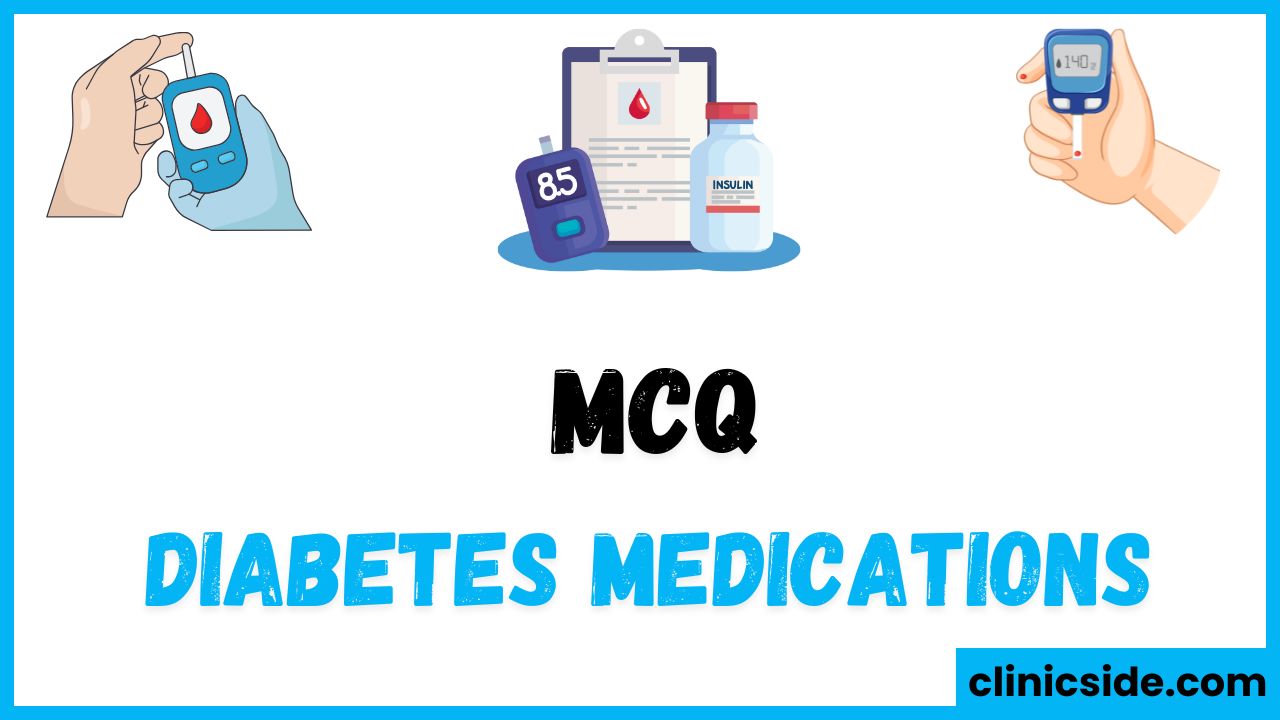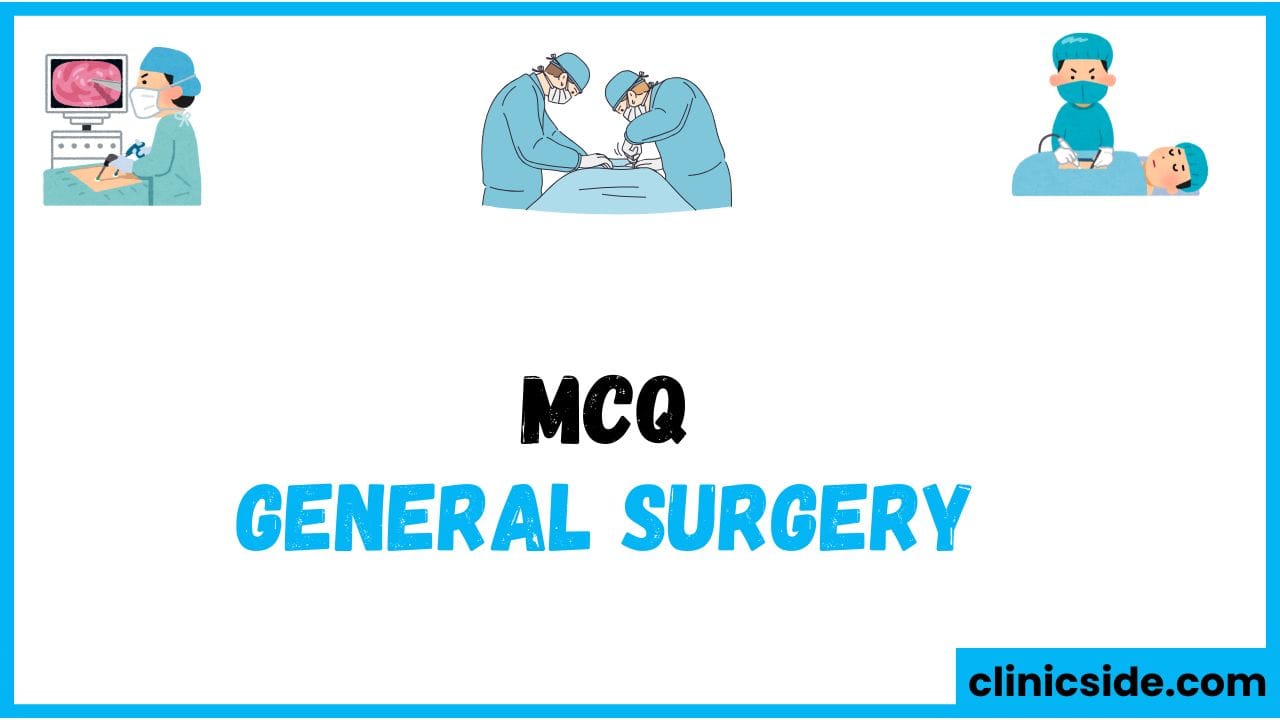Quiz
Available options: 1 to 20
Summary of MCQs on Diabetes Medications
This summary outlines key concepts from the multiple-choice questions on diabetes medications. It highlights various drug classes, their mechanisms, side effects, special considerations, and advances in treatment, which are essential for effective diabetes management.
Drug Classes for Diabetes Management
Diabetes treatment involves various drug categories, each serving a specific purpose in regulating blood sugar. Biguanides, like Metformin, reduce glucose production in the liver and enhance insulin sensitivity. Sulfonylureas, such as Glimepiride and Glyburide, stimulate insulin secretion from the pancreas to lower blood sugar levels. GLP-1 receptor agonists, including Exenatide, work by boosting insulin release in response to meals, suppressing glucagon production, and slowing gastric emptying. SGLT2 inhibitors, like Canagliflozin, help eliminate excess glucose through urine by blocking glucose reabsorption in the kidneys, offering an alternative way to manage blood sugar levels.
Insulin Types and Their Effects
Various insulin types are designed to match specific treatment needs. Insulin glargine is a long-acting insulin providing consistent blood sugar control for up to 24 hours, while insulin glulisine is a fast-acting option suited for mealtime use. Insulin degludec, an ultra-long-acting insulin, offers more than 40 hours of coverage, making it ideal for patients who require extended insulin control without multiple daily injections. Selecting the right insulin type depends on the patient’s lifestyle and blood glucose requirements.
Adverse Effects of Diabetes Medications
Side effects are a crucial aspect of diabetes treatment. Sulfonylureas may cause hypoglycemia, as they stimulate insulin release even when blood sugar is already low. Biguanides, especially Metformin, can lead to lactic acidosis, a rare but severe complication, particularly in patients with kidney issues. GLP-1 receptor agonists, such as Exenatide, have been associated with pancreatitis, while Thiazolidinediones like Pioglitazone can cause fluid retention, worsening heart failure. Recognizing and managing these side effects is essential to ensure patient safety.
Special Considerations in Treatment
Certain conditions require careful drug selection. Metformin should be avoided in individuals with renal dysfunction, as it can increase the risk of lactic acidosis. Similarly, Pioglitazone, a Thiazolidinedione, should not be prescribed to patients with heart failure due to the risk of exacerbating fluid retention. GLP-1 receptor agonists are typically avoided in individuals with a history of pancreatitis. These considerations help minimize complications and ensure optimal treatment.
Mechanisms of Action of Medications
Diabetes drugs work through different mechanisms to regulate blood glucose. Sulfonylureas help lower blood sugar by stimulating the pancreas to release more insulin. SGLT2 inhibitors, like Canagliflozin, prevent glucose reabsorption in the kidneys, leading to increased glucose excretion in the urine. Acarbose inhibits carbohydrate digestion in the intestines, delaying glucose absorption, while DPP-4 inhibitors raise incretin levels, which stimulate insulin secretion and inhibit glucagon, enhancing glucose control.
Addressing Insulin Resistance
Many diabetes drugs target insulin resistance, a hallmark of type 2 diabetes. Pioglitazone helps improve insulin sensitivity by activating receptors in fat cells, while Metformin reduces liver glucose production and enhances insulin action in muscles. By improving how the body uses insulin, these drugs help control blood sugar more effectively in individuals with insulin resistance.
Insulin Therapy in Special Situations
Gestational diabetes often requires insulin therapy, as oral agents like Metformin and Pioglitazone are generally avoided during pregnancy. Insulin provides more controlled blood glucose regulation during pregnancy, helping to avoid complications such as macrosomia and preterm birth. Managing gestational diabetes effectively is crucial to the health of both the mother and the baby.
Drug Contraindications and Interactions
Certain drugs have contraindications that must be taken into account. Metformin is contraindicated in patients with renal impairment due to the risk of lactic acidosis. Pioglitazone should be avoided in patients with heart failure due to its fluid-retaining effects. Additionally, drug interactions, such as those between insulin and other medications, must be carefully monitored to prevent adverse effects.
Benefits of Combination Therapies
Combination therapies have become an important strategy in diabetes management. For instance, Xultophy, which combines insulin degludec with liraglutide, provides both insulin and GLP-1 receptor agonist benefits. This combination improves blood sugar control and supports weight loss, enhancing the effectiveness of diabetes treatment. Using multiple medications that address different mechanisms provides a more comprehensive approach to managing blood glucose.
Advances in Diabetes Treatment
Recent advancements in diabetes treatment include newer medications like GLP-1 receptor agonists and SGLT2 inhibitors. These not only help regulate blood sugar levels but also offer additional benefits such as weight loss and cardiovascular protection. Insulin degludec, an ultra-long-acting insulin, provides greater flexibility with fewer daily injections, improving patient adherence and simplifying diabetes management. These innovations are paving the way for better outcomes in diabetes care.
This comprehensive summary offers a detailed overview of the medications used in diabetes management, focusing on drug mechanisms, side effects, contraindications, and advancements in treatment. It emphasizes the importance of selecting the right treatment based on patient-specific factors to ensure effective and safe diabetes management.





